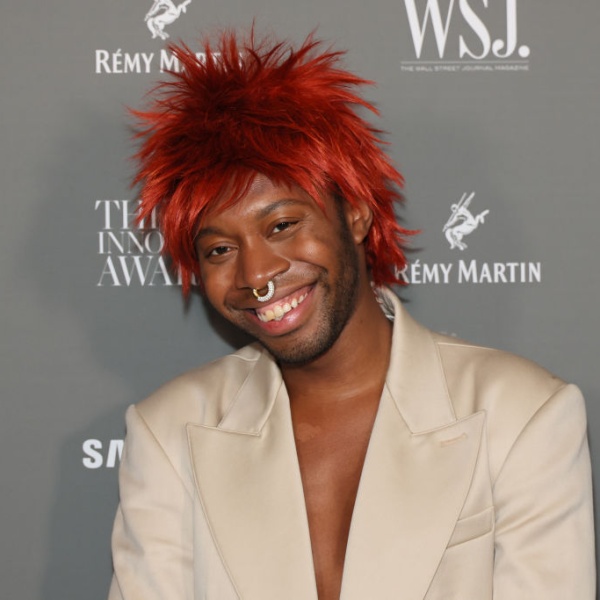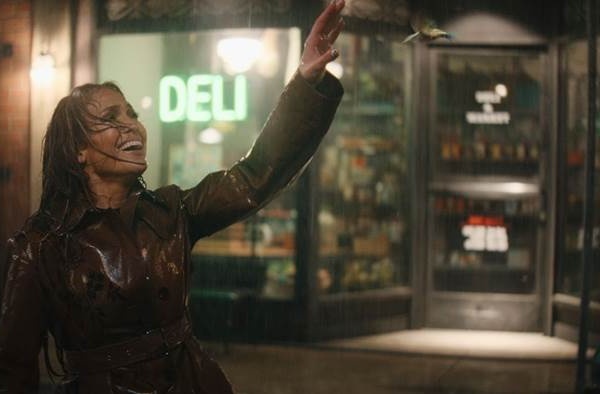
Assuming “The Lone Ranger” ever gets made, spoilers ahead
Hollywood are heading into an unusually thrifty mode these days, with several big potential projects, like Guillermo del Toro‘s “At the Mountains of Madness” and Ron Howard‘s “The Dark Tower” being scrapped since the start of the year. But of all the big movies in the works, one that reunited the producer, writers, director and star of the “Pirates of the Caribbean” franchise, which has taken over $3 billion worldwide theatrically alone, seemed to be a safe bet. And yet “The Lone Ranger,” which was to star Johnny Depp and Armie Hammer, to be directed by Gore Verbinski and produced by Jerry Bruckheimer, has been shut down by Disney after concern over the film‘s budget, said to have risen to a whopping $232 million (that itself cut down from an original $250 million price tag).
Jeffrey Wells at Hollywood Elsewhere wrote over the weekend that the film was “a kind of an Indian-spirituality werewolf movie” with extensive CGI, hence the gigantic budget, based on his ready of a 2009 draft of the film by ‘Pirates’ writers Ted Elliott and Terry Rossio. It’s been no secret that the film, like the swashbuckling franchise, would involve supernatural elements, but we’ve read the same draft, and Wells doesn’t have it quite right: there are supernatural wolves, and a legion of coyotes, but they’re not strictly speaking werewolves. Instead, the major supernatural element in the script involves the Wendigo, a cannibalistic Native American spirit capable of possessing humans.
As such, the effects workload wouldn’t have been any higher than the average blockbuster — of course there would be heavy CGI elements, but probably far less than something like, say, Disney’s other forthcoming tentpoles “John Carter” and “Oz: The Great and Powerful” — and the fantastical elements, at least in Elliot and Rossio’s draft (Justin Haythe has since come on board to rewrite) aren’t massively prominent, the film being more of a straight action Western.
So the idea that the film’s hit a speedbump because it’s stacked with CGI isn’t accurate, the reasons being far more varied. We suspect that the film will still move ahead at some point — Depp’s likely to be on a pay-or-play contract, and Disney won’t want to take that hit without getting something out of it. It might even make its October start date if the budget can be trimmed down enough (although whether Verbinski comes along for the ride is more of a question mark — as Warners did with “Akira,” the studio may go after a younger, cheaper helmer who can bring the film in on a budget). But how did that budget get so big? And why did Disney start to feel so nervous about something which only a few months ago seemed like a sure-fire hit?
1. It Was, After All, An Expensive Big-Scope Action Picture
It might not have been stuffed with CGI creatures, but there’s no denying from a look at Elliot and Rossio’s draft (which gives at least a guide of where the film was heading, as most of the casting announcements gel with roles in it) that it would have cost a pretty penny. Period pieces are always expensive, for one, and particularly one like this; shooting in New Mexico won Disney tax breaks, but it also meant they couldn’t shoot on a backlot — enormous sets, of which several are written in, would have to be constructed from scratch. As you’d expect from a film like this, there are plenty of big action sequences as well — two set on a train, including a bridge collapse and derailment, a Comanche attack and a wild horse stampede, plus the coyote/wolf sequence that Wells talks about. None of these things can be skimped on for a hopeful tentpole.
2. It Had Hefty Above-The-Line Costs
Even if the film involved nothing else but Verbinski filming Depp playing with a cup and ball, it likely would have cost at least $60 million, possibly more. According to Vanity Fair, Depp made $35 million upfront alone for “Pirates of the Caribbean: On Stranger Tides,” and we’d imagine it’s unlikely that he’d be doing this for any less. Verbinski was probably picking up a hefty paycheck, as were Bruckheimer and the writers, meaning that the film has cost the average budget of a movie before anything had been shot. And all likely had major back-end deals too: Depp is expected to make around $100 million in total off the success of ‘Pirates,’ which would curb Disney’s profits severely. And all this without taking into account the cost of press and advertising, likely to be at least another $100 million on top. There’s no denying Depp’s star appeal, but it’s not bulletproof — witness the domestic underperformance of “The Tourist.” To put it simply, there’s a reason that many blockbusters go with relative unknowns — look at the Marvel pictures, or “Star Trek.”
3. The Failure Of “Cowboys & Aliens”
It’s no coincidence that this news came only a few weeks after Jon Favreau‘s “Cowboys & Aliens” became the biggest flop of the summer season. Another $200 million Western mash-up with two big stars in the lead, it’ll be lucky to clear $100 million in the U.S, despite having a highly marketable title and premise. It’s not like the Western is ever a home-run at the box office these days: the top-grossing film in the genre remains “Dances with Wolves,” which took $400 million worldwide 20 years ago. Behind that, there’s last year’s surprise hit “True Grit,” but that film only took 30% of its total in foreign territories, which has to be a concern for Disney considering that ‘Pirates 4’ took 75% of its gross abroad. Furthermore, the grim, serious tone of “Cowboys & Aliens,” thought by many to be part of the problem, looked to be where “The Lone Ranger” was heading: Haythe is best known for “Revolutionary Road,” and Jeff Wells says that Depp, keen to honor his own Native American heritage, “didn’t want to do any kind of jaunty performance that plays it light and spoofy with the Native American thing. No Captain Jack crap this time around.” People love Depp in crazy mode, but this wasn’t necessarily going to play to that audience.
4. December 2012 Is Crazy Busy
More and more, we’re finding that the prime blockbuster seasons are proving to be cluster-fucks, with this summer busier than ever and 2012 shows no sign of changing that: even March, until a few years ago a relatively quiet month, has several big blockbusters lining up. Disney had set “The Lone Ranger” for a prime Christmas slot on December 21st, but that week would also see the release of Ang Lee‘s “Life of Pi” and the Brad Pitt vehicle “World War Z,” while, more worryingly, the first part of “The Hobbit” would land the week before, and Quentin Tarantino’s Western “Django Unchained” four days later. And we’re sure more will be added to the slate in the next year. And November has hopeful tentpoles like “Bond 23,” “Ouija,” “The Twilight Saga: Breaking Dawn Part 2,” “47 Ronin” and “Gravity.” Of course, pulling or delaying “The Lone Ranger” leaves Disney without a big Christmas movie, but it’s totally conceivable that they’ll move the already-filming “Oz: The Great and Powerful” up from March 2013 to Christmas 2012, seeing as it’s a bigger, more holiday-friendly property. (If “The Lone Ranger” does live to fight another day, it could then slip to March or Summer 2013.)
5. Disney Have Overspent On Other Tentpoles, And It Hasn’t Necessarily Paid Off So Far
New Disney boss Rich Ross raised some eyebrows at the start of last year when he announced that the company would now focus solely on four-quadrant tentpoles and low-budget teen flicks, but scrapping safe-bet mid-budget sequels to films like “The Proposal” and “Wild Hogs” as a result. But things haven’t gone too well so far: ‘Pirates 4’ did fine, obviously, but both “Tron: Legacy” and “Cars 2” have disappointed, relatively speaking (the latter is one of Pixar‘s lowest grossers), while at the other end of the scale, “Prom” struggled to make back even its meager $8 million budget. And the budgets keep going on: the budget of “John Carter” has risen to $250 million and it faces a March full of other effects-heavy blockbusters and an uphill battle to gain an audience, while “Oz: The Great and Powerful” will cost about the same, and with an untested tentpole lead (because “Rise of the Planet of the Apes” wasn’t exactly sold off the back of James Franco), it’s still kind of risky. “The Lone Ranger” seemed to be a safer bet than either, but if the studio can pinch some pennies, they will. And if “John Carter” tanks, expect “Wild Hogs 2” to look like a far more tempting proposition…




